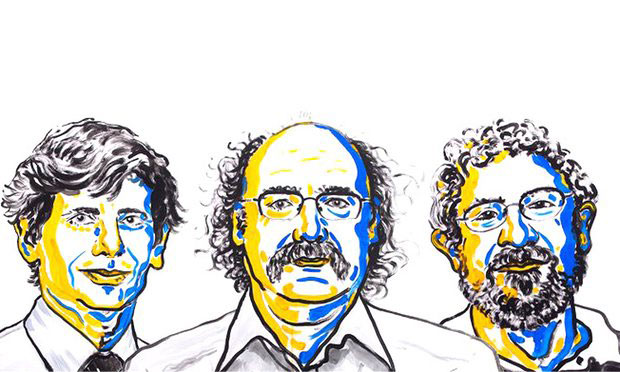The Royal Swedish Academy of Sciences awarded the researchers working on the superconductivity of exotic matter, ignoring the discoverers of billion-year-old black hole collisions.
The discovery of gravitational waves confirmed Einstein’s theory, which was regarded as a surefire candidate for receiving the Nobel Prize in Physics. But the three founders of LIGO, the Laser Interferometer Gravitational-Wave Observatory, were not rewarded, perhaps because the discovery would have been impossible without former director Barry Barish.

Others believe that the findings of LIGO were made public too late for the Academy to take them into account for this year’s ceremony. Rumors about the discovery were floating around September 2015, but the research was made public in February of 2016.
Confirming a century-old theory by Einstein not suitable for the Nobel
The prize was awarded to Michael Kosterlizt, Duncan Haldane, and David J. Thouless, the discoverers of phase transition, a mechanism through which superconductivity occurs at low temperatures and disappears at higher temperatures.
Superconductivity is achieved when electrical resistance drops to zero thanks to the cooling of a specific material. It is the idealization of perfect conductivity as materials cannot always serve as perfect electricity conductors. The discovery was named the Berezinskii-Kosterlizt-Thouless transition.

On the other hand, LIGO is a massive physics experiment facility solely built to detect gravitational waves and make measurements of their magnitudes and properties. It first started research back in 2002, and in 8 years of operation, no gravitational waves were spotted. The detectors were upgraded for 2015 and right in 2016 a first detection was reported, thanks to the 1,000-plus scientists worldwide commissioned to analyze the data.
In contrast, gravitational waves were first confirmed back in 1974, when researchers observed the binary pulsar PSR 1913+16. It displayed an energy decay that was in line with Einstein’s observations. Discoverers Russell Alan Hulse and Joseph Hooton Taylor Jr. were awarded the Nobel Prize in Physics in 1993 for their findings.
Years before the waves’ detection, scientists were sure that it would be possible to measure the characteristics of light and gravitational waves. These were expected to be primarily originated by either neutron star or black hole collisions, supernova explosions, and remnants of radiation from the very birth of the universe.
Einstein’s general theory of relativity proposes that gravitational waves formed millions of light years away from Earth should distort a high energy laser in a magnitude equivalent to a one-thousandth of the charge of a proton. On February 11 the detection of the first gravitational waves was announced, confirming the existence of massive black hole collisions.
Another gravitational wave event was reported on June 15, which was initially measured December 2015. This second measurement confirmed the merging of two black holes, which added to over 20 times the mass of the sun and occurred 1.4 billion light years away from Earth.
Source: PerfScience

The finding of LIGO team was fantastic. The magnetic stain result 1×10*-21 fits exactly some nine calculations the writer hhas made in his 2014 year book on Exact Physics and gravitation confirming validity of the integer model, the probability model and kinetic model for physics and gravitations that took 14 years to uncover. My computer was attacked several time to steal data and to stop progress in this field.